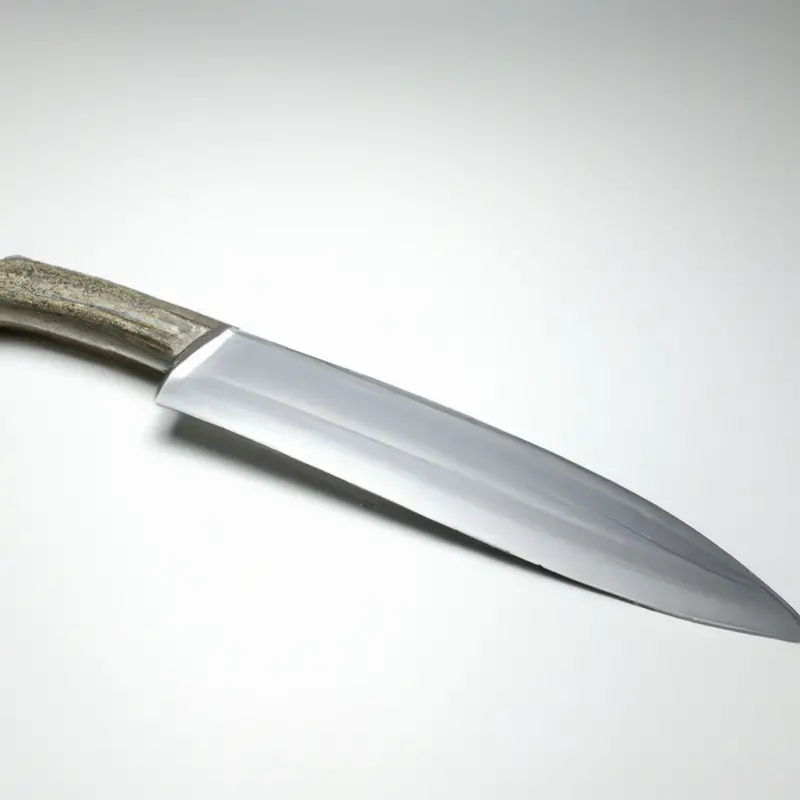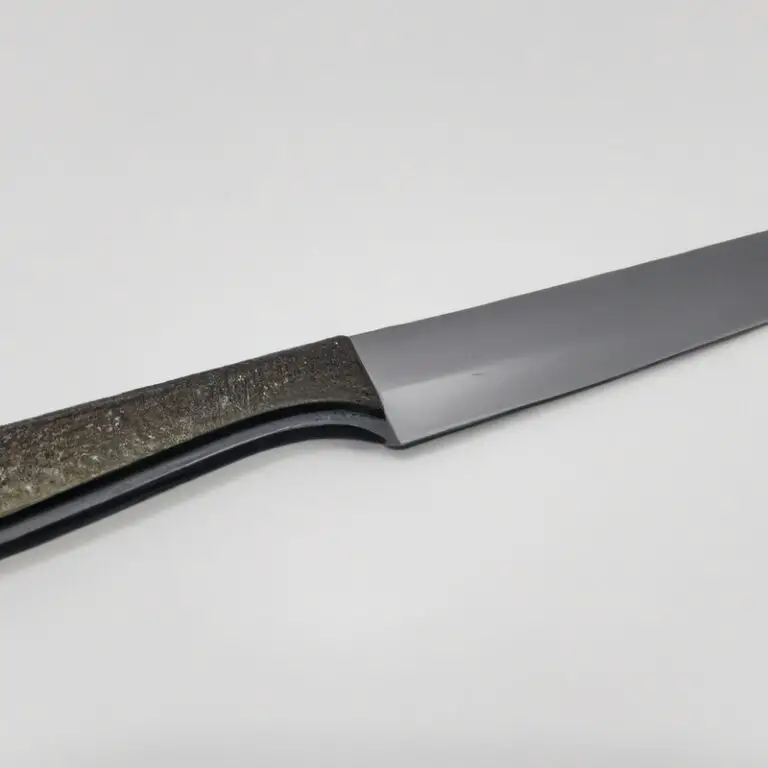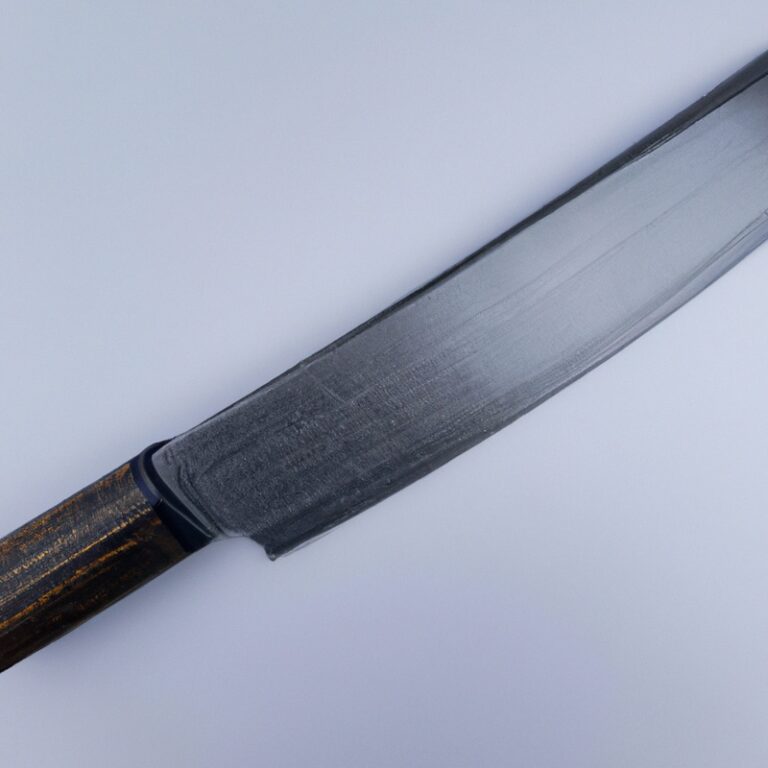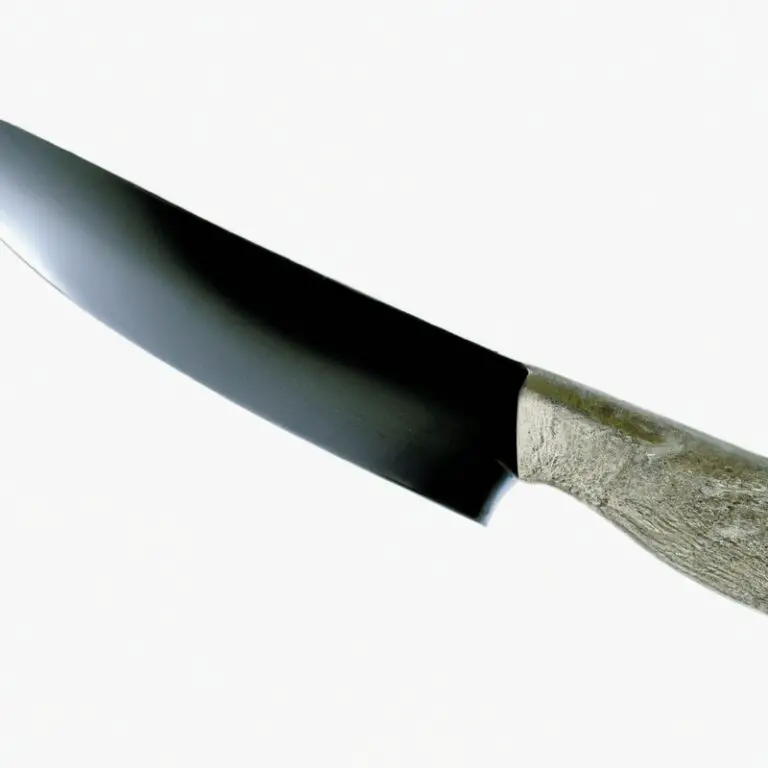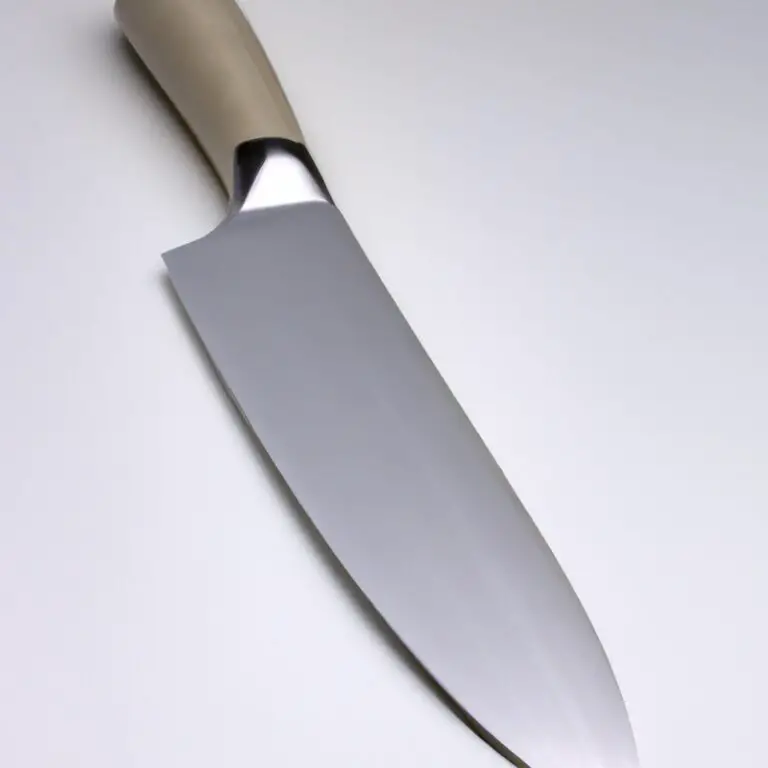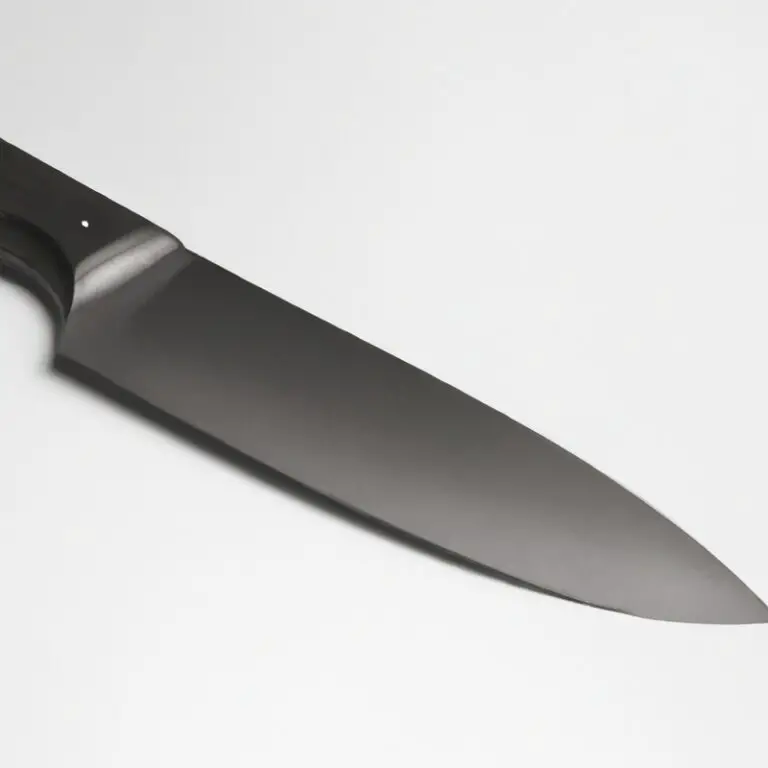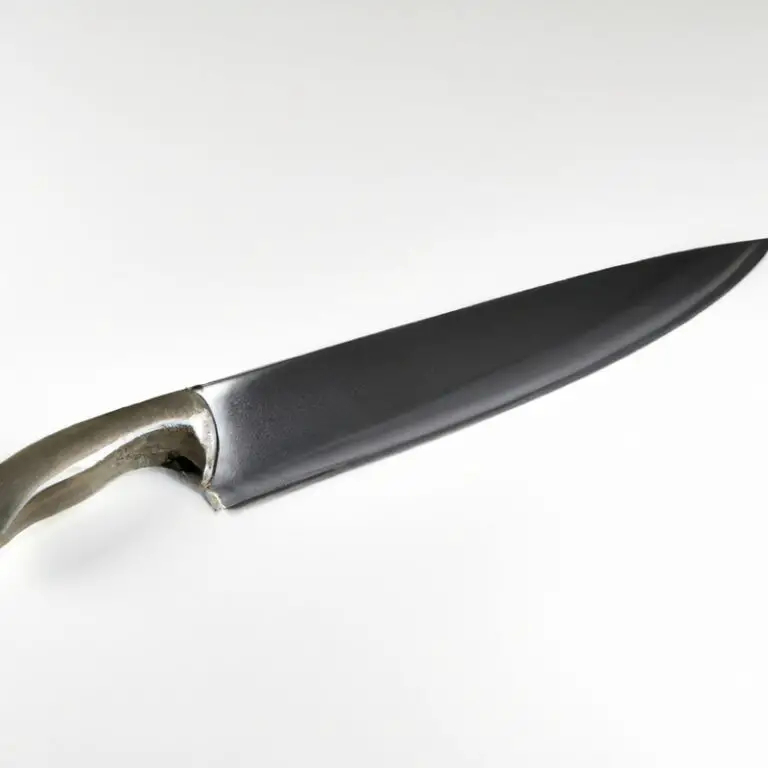How To Prevent Cross-Contamination On a Cutting Board Used With Gyuto Knives? – Safely!
Key Takeaways:
- Clean and sanitize your cutting board thoroughly before and after each use to prevent cross-contamination.
- Use different cutting boards for different food groups to avoid mixing bacteria and other harmful pathogens.
- Ensure your Gyuto knife is well-maintained and sharpened to minimize the risk of cross-contamination.
- Follow proper food safety and hygiene practices when handling food to reduce the chances of contamination on your cutting board.
If you’re a home cook or culinary enthusiast, you know the importance of using a high-quality knife like a Gyuto. But have you considered the potential risks that come with using the same cutting board for raw meat, cooked food, and vegetables?
Cross-contamination is a serious concern that can lead to foodborne illnesses.
In this article, I’ll share my expert knowledge on proper cleaning techniques, separating raw and cooked meats, using color-coded cutting boards, and sanitizing your cutting board regularly. Don’t risk your health by neglecting this critical aspect of food safety.
| Prevention Method | Explanation |
|---|---|
| Use a dedicated cutting board | Use one cutting board for meat and another for vegetables to avoid cross-contamination. This separates the germs each board is exposed to, so it minimizes the risk of spreading harmful bacteria or pathogens. |
| Clean and sanitize the board | Use hot, soapy water and a soft-bristled brush to clean the cutting board after each use. Rinse thoroughly with hot water and dry with a clean cloth. After washing, sanitize the board by wiping it down with a solution of one tablespoon of chlorine bleach per gallon of water. Leave the solution on the board for a few minutes, rinse, and then air dry. |
| Avoid cutting frozen food | Don’t cut frozen food on your cutting board with a Gyuto knife because the hard surface can quickly dull your knife’s sharp edge, and tiny metal particles from the knife can accumulate in the food later. |
| Use separate knives for meat and vegetables | Using separate knives for meat and vegetables (especially Gyuto knives) can minimize cross-contamination. Choose knives that come with matching sheaths or blade guards so that the knives don’t touch or rub against each other. |
Proper cleaning techniques for Gyuto knife cutting boards
Proper cleaning of Gyuto knife cutting boards is essential to prevent cross-contamination. Here are some quick and easy steps to follow:
- First, rinse the board with hot water and scrub it with soap to remove most of the debris.
- Use a separate brush or sponge to clean the knife grooves.
- Rinse the board thoroughly with hot water to remove all the soap.
- Sanitize the board with a mixture of 1 tablespoon of bleach per gallon of water. Pour the solution on the board and let it sit for a few minutes.
- Rinse the board with hot water and dry it completely with a paper towel or a clean cloth.
Remember not to soak the cutting board in water as it can cause it to warp, crack, or split. Wooden boards require extra attention, and it’s recommended to oil them regularly to prevent them from drying out and cracking.
Following these simple cleaning techniques will help keep your Gyuto knife cutting board clean, safe, and free from cross-contamination.
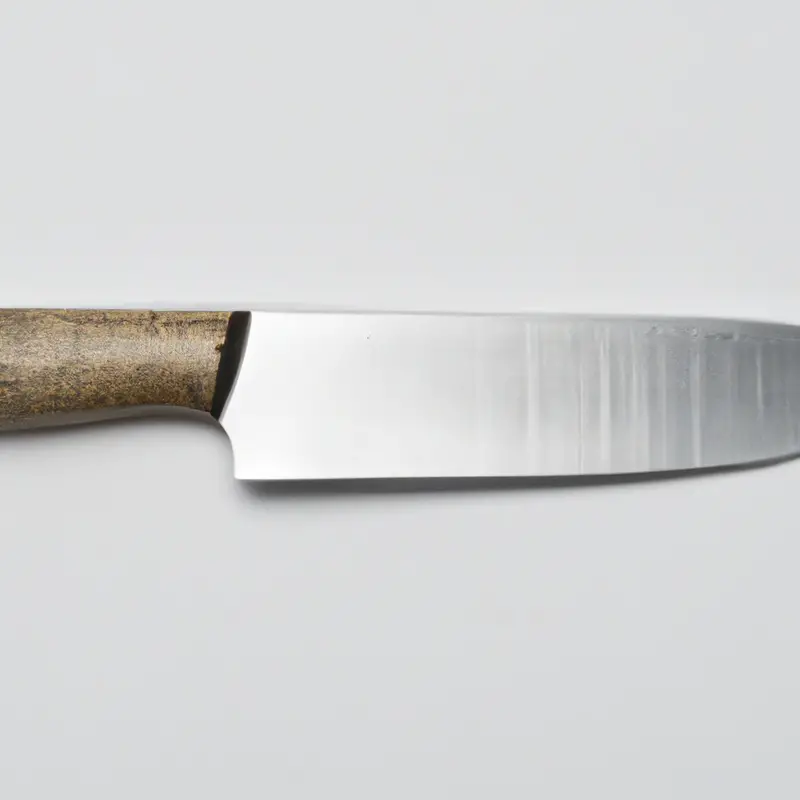
Understanding the risks of cross-contamination with Gyuto knives
Cross-contamination is a common concern when using Gyuto knives and cutting boards. These knives are sharp and narrow, making it easier for bacteria from raw meat to transfer to other foods.
The biggest risk of cross-contamination occurs when raw meat and cooked food come into contact with each other on the same cutting board.
This can lead to foodborne illness. Proper cleaning techniques and regular sanitizing can help mitigate these risks.
Additionally, it is important to avoid using porous cutting boards, such as wooden ones, with raw meat and Gyuto knives.
When using multiple cutting boards, color-coding is an effective way to keep them separate and prevent cross-contamination. Proper storage of Gyuto knives can also help prevent contamination.
Understanding these risks is crucial for maintaining a clean and safe kitchen environment.
Importance of separating raw and cooked meats on cutting boards
It is crucial to separate raw and cooked meats on cutting boards to prevent cross-contamination. Raw meat contains harmful bacteria such as E.coli, salmonella, and listeria, which can spread to other foods and cause foodborne illnesses.
When raw meat comes in contact with a cutting board, the bacteria can stay on the surface even after washing, and when cooked meat is placed on the same board, it can get contaminated.
To prevent cross-contamination, always use a separate cutting board for raw meats and another one for cooked meats. It is also recommended to use different cutting boards for vegetables and fruits to avoid any contamination from meat juices.
It is essential to wash cutting boards thoroughly with hot soapy water after each use, especially when switching between raw and cooked meats.
Additionally, using color-coded cutting boards can help to prevent cross-contamination. When using a color-coded system, use red for raw meats, blue for cooked meats, green for vegetables and fruits, and yellow for poultry.
This helps to avoid confusion and ensures that the cutting boards are always used for their appropriate purpose.
In summary, separating raw and cooked meats on cutting boards is essential to prevent cross-contamination. Always use separate cutting boards, wash them thoroughly, and consider using a color-coded system to prevent any confusion.
Sanitizing cutting boards regularly to mitigate cross-contamination risks
Sanitizing cutting boards regularly is crucial to prevent cross-contamination risks. Cross-contamination occurs when harmful bacteria spread between different surfaces, such as from raw meat to other foods or utensils.
To sanitize a cutting board, clean the surface thoroughly with hot, soapy water, rinse it with water, and then apply a solution of 1 tablespoon of bleach per gallon of water.
Leave the bleach solution on the cutting board surface for a few minutes, then rinse it thoroughly with water. It is recommended to sanitize cutting boards after each use, especially when handling raw meat, poultry, or fish.
Sanitizing cutting boards is an effective way to reduce the risk of foodborne illness and keep your kitchen safe and sanitary.
The benefits of using color-coded cutting boards to prevent cross-contamination
Using color-coded cutting boards is an effective way to prevent cross-contamination when working with different types of foods, including Gyuto knives. Assigning specific colors to cutting boards for different food groups can help prevent the transfer of harmful bacteria from one food to another.
For instance, using a red board for raw meat, a green board for vegetables, and a blue board for cooked foods will help keep everything separate and safe.
Color-coded cutting boards are easy to manage and ensure that the right cutting board is being used for the right food item, reducing the risk of contamination. They also help to maintain a clean and organized kitchen, as it is clear which cutting board should be used for which preparation task.
This is an inexpensive and simple method that can significantly minimize the chances of food contamination.
Moreover, color-coded cutting boards make things easier for people with color blindness or other visual impairments. The use of colors instead of labels or written descriptions ensures that everyone can understand which board to use, which will help to prevent cross-contamination.
Using color-coded cutting boards is highly recommended for preventing food contamination.
It is a straightforward and practical approach to keep your kitchen and your food safe, especially when using Gyuto knives.
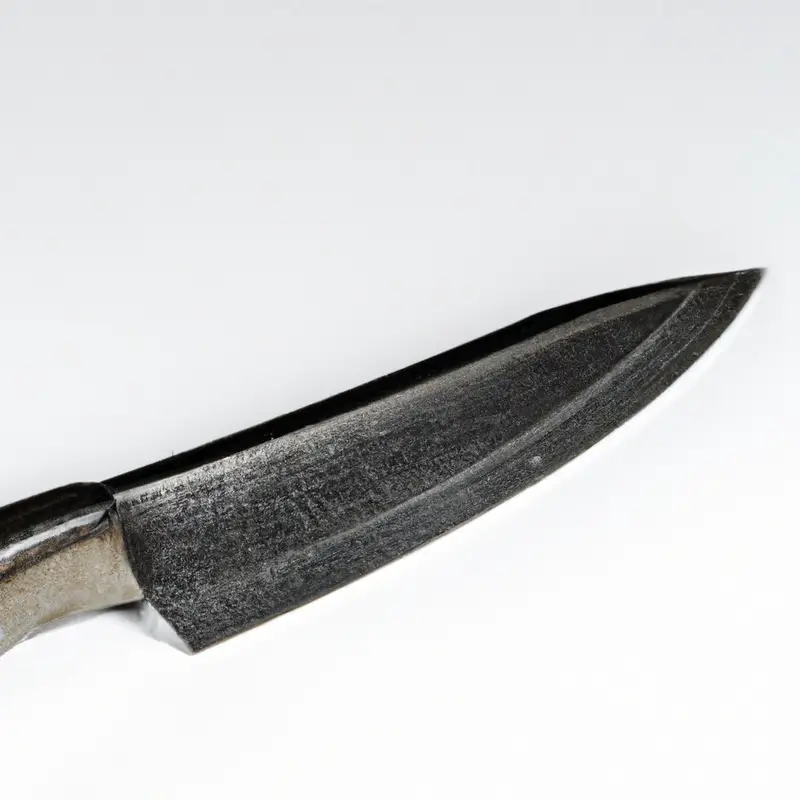
The danger of using one cutting board for multiple types of foods
Using one cutting board for multiple types of foods is a dangerous practice that increases the risk of cross-contamination. Raw meat, poultry, and seafood can contain harmful bacteria, such as salmonella and E.
coli, which can spread to other foods if the same cutting board is used without proper cleaning and disinfection.
Even fruits and vegetables can harbor harmful bacteria that can contaminate other foods and lead to foodborne illnesses. To prevent cross-contamination, it is recommended to use separate cutting boards for raw meat and other foods.
Using color-coded cutting boards can also help to prevent confusion and ensure that the right cutting board is used for the appropriate food item.
Proper cleaning and sanitization of cutting boards is crucial to mitigate the risks of cross-contamination and protect the health of consumers.
How to properly sanitize a cutting board with bleach solution
To properly sanitize a cutting board with bleach solution, follow these steps:
- Wash the cutting board with hot, soapy water to remove any debris or food particles.
- Rinse the cutting board with plain water and pat dry with a clean towel.
- Mix one tablespoon of bleach with one gallon of water in a container.
- Submerge the cutting board in the bleach solution for two minutes.
- Rinse the cutting board with plain water and pat dry with a clean towel.
- Store the cutting board in a clean, dry place.
Using bleach solution to sanitize your cutting board is an effective way to kill bacteria and prevent cross-contamination. However, it is essential to handle bleach with care and follow the instructions on the label.
Always wear gloves and use in a well-ventilated area.
Why wooden cutting boards require extra cleaning attention with Gyuto knives
Wooden cutting boards require extra cleaning attention with Gyuto knives because the porous surface of wood can harbor bacteria and viruses. The blade of a Gyuto knife, which is sharp and thin, can create grooves in the wood that trap food particles and bacteria, making it difficult to clean thoroughly.
Furthermore, wooden cutting boards cannot be sanitized in the same way as plastic cutting boards, as they are more prone to warping and cracking when exposed to high temperatures or moisture.
Therefore, it is essential to wash wooden cutting boards with hot, soapy water after each use and to dry them immediately to prevent bacteria from multiplying. Additionally, periodic oiling of wooden cutting boards with mineral oil or beeswax can help maintain their structure and prevent moisture from seeping in, which can create an ideal environment for bacterial growth.
The risks of using porous cutting boards with raw meat and Gyuto knives
Using porous cutting boards with raw meat and Gyuto knives can pose serious risks to your health. Porous cutting boards absorb moisture, which provides the perfect environment for bacteria to thrive and multiply.
When used with raw meat and Gyuto knives, these bacteria can easily transfer onto other foods, utensils, and surfaces, leading to cross-contamination and the potential for foodborne illnesses.
In addition to the health risks, using a porous cutting board with Gyuto knives can also damage the blade. Porous materials such as wood and bamboo can cause the knife to dull quickly and make it difficult to maintain a sharp edge.
This can be dangerous when cutting through raw meats, as a dull knife can slip and cause injury.
To prevent these risks, it is best to use non-porous cutting boards made of materials such as plastic, glass, or stainless steel when working with raw meats and Gyuto knives. These materials are easy to clean and sanitize, which helps to prevent the growth and spread of bacteria.
If you prefer to use a wooden cutting board, make sure to clean and sanitize it thoroughly after each use and consider using a separate board for raw meat and other foods.
By being mindful of the risks associated with porous cutting boards, you can take steps to prevent cross-contamination and keep yourself and your family safe from foodborne illnesses.
The importance of storing your Gyuto knives properly to prevent contamination
Proper storage of your Gyuto knives is crucial in preventing contamination. It is important to keep them in a safe and clean place, away from other utensils, and ideally in a knife block or sheath.
This reduces the chances of cross-contamination with other tools and potential exposure to harmful bacteria.
Always make sure to wash and dry your knives thoroughly before storing them to prevent any residual bacteria from multiplying in damp spaces. By properly storing your Gyuto knives, you can ensure that they remain sharp, safe, and free of any harmful bacteria, ensuring that you can continue to prepare meals safely and efficiently.
Final Verdict
Preventing cross-contamination on a cutting board used with Gyuto knives is crucial in ensuring food safety and hygiene. It is important to understand the risks associated with using one cutting board for multiple types of foods, especially raw and cooked meats.
Proper cleaning techniques, regular sanitization, and color-coding your cutting boards are all effective methods to mitigate cross-contamination risks.
Additionally, wooden cutting boards require extra attention and care, as they are porous and can harbor bacteria and germs. Remember to always store your Gyuto knives properly to prevent contamination.
By following these guidelines, you can help keep yourself and others safe when handling food.
Let’s make food safety a top priority in our kitchens!

